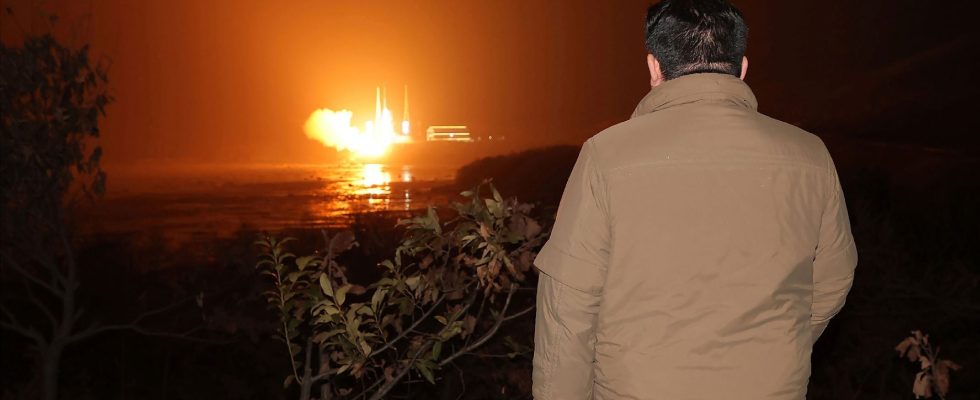After the San Diego naval base and that of Kaneda, in Japan, the White House and the Pentagon would be closely monitored by Pyongyang. According to the official North Korean press organ KCNA, the communist dictatorship’s space agency sends Kim Jong-un every day new photos taken by the “spy” satellite Malligyong-1, with a predilection for American sites. The “supreme commander” would derive “great satisfaction” from it.
Enough to worry Seoul, Tokyo and Washington, where questions remain since the launch, on November 21, of the Chollima-1 rocket and the placement in orbit of the satellite, in defiance of the UN sanctions imposed on Pyongyang for its nuclear programs. This success, which followed two failed tests, in May and August, concretized an ambition stated in the 2021 five-year plan aimed at defending the country.
The capabilities of the Malligyong-1 have not been confirmed but Pyongyang can, in theory, in addition to South Korean troops, monitor American forces on the peninsula, in Japan, even in the Pacific and in the United States. Certainly, experts believe, the resolution of the images would remain limited, far from what Pyongyang can already obtain from its Chinese or Russian allies. But “satellite imagery can serve the North’s military capabilities as Pyongyang gains experience in using images, sends new satellites and improves its ground infrastructure,” notes Vann Van Diepen, former -Deputy US Secretary of State for International Security and Non-Proliferation between 2009 and 2016.
North Korea, which is reportedly progressing quickly in this area, has also announced new launches. Seoul attributed the success of that of November 21 to aid from Moscow, promised during the meeting between Kim and Vladimir Putin on September 13 in a highly symbolic place: the Vostochny cosmodrome, in the Russian Far East. Putin then raised the possibility of helping Pyongyang build satellites, adding that the heir to the Kim dynasty “showed keen interest in space technology.” The two autocracies have been strengthening their cooperation since North Korea supported Russia in its war in Ukraine – it would have supplied it with more than a million shells, according to a South Korean MP.
“It is, however, unlikely that new equipment or technology could have been supplied, installed and verified in the relatively short time preceding the launch,” Vann Van Diepen explains. North Korea could therefore have designed and launched its first spy satellite alone. Regardless, tensions continue to escalate on a peninsula where dialogue has been at a standstill since 2019. The conservative South Korean government reacted to this stunt with the partial suspension of the agreement. bilateral agreement of 2018, which established, in particular, buffer zones along the demilitarized zone (DMZ) which divides the peninsula in two – and the maritime line, in the Yellow Sea. The idea was to limit the risk of collisions.
Pyongyang responded to its enemy brother to the South that the launch of the satellite was a “legitimate exercise” of the “sovereign right to defend itself”. He warned that he will have to pay a “high price” for the suspension of the agreement now considered “obsolete”. The North has already deployed armed soldiers to the village of Panmunjeom – where the truce was signed in 1953 – in the DMZ, and reinstalled guard posts in the buffer zones from which they had been withdrawn.
Far from being intimidated, the South has maintained a firm position since the 2022 election of President Yoon Suk-yeol. “It is not excluded that we will respond,” his deputy national security adviser said recently. “Advancements in North Korean military capabilities and shows of force by the U.S.-South Korean alliance since the end of diplomatic exchanges in 2019 have increased tensions, intensified the arms race and elevated the risk of conflict on the peninsula Korean as in the region”, summarizes Franck Aum, specialist in Northeast Asia at the United States Institute of Peace. In this explosive climate, the launch of the satellite constitutes an additional spark.
